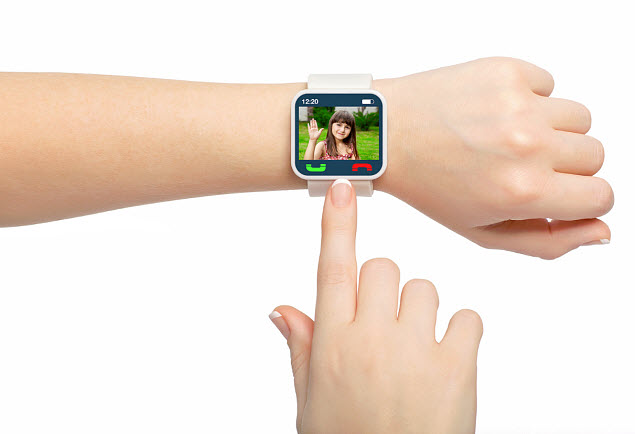The Meta M1 premium wearable technology is now being sold in a number of band options and colors.
It feels as though this is the year in which smartwatches are being announced, unveiled, or released with every passing week, but while many of them struggle to provide consumer with an appealing design or style, Meta Watch is hoping to overcome that barrier with its Meta M1.
When creating this wearable technology product, the company prioritized look at the same level as function.
Though the Meta M1 smartwatch had initially been expected for a spring release, after it had made its first appearance in the form of its prototype at the January CES trade show, the wearable technology gadget has only just recently been released for preorder. That said, it is available in a range of different band options, finishes, and colors. The M1 Core can be purchased in a stainless steel case, with a band that is either steel, leather, or rubber. The price ranges from $249 to $349, depending on the options that have been selected.
The M1 Color smartwatch is available with a band made of red or white rubber, with a stainless steel case.
 That device is being sold for $249. Finally, the premium model of the brand’s wearable technology is the M1 Limited smartwatch, which offers a rose gold plated case with a blue crocodile strap, or a black case with a brown leather strap, being sold for $399. There is also a black M1 limited that has a black steel band that is being sold with the largest price tag, at $449. While they can be purchased as a pre-order now, it is expected that the devices will actually start shipping in September.
That device is being sold for $249. Finally, the premium model of the brand’s wearable technology is the M1 Limited smartwatch, which offers a rose gold plated case with a blue crocodile strap, or a black case with a brown leather strap, being sold for $399. There is also a black M1 limited that has a black steel band that is being sold with the largest price tag, at $449. While they can be purchased as a pre-order now, it is expected that the devices will actually start shipping in September.
The design of the watch was created by Frank Nuovo, who is known for his time with Vertu and Nokia. The pivot points on the strap of this smartwatch are a unique form, which allows the wearable device to be able to conform to the wrist of the wearer in a much more accurate – and hopefully comfortable and attractive – way than the traditional form of a wristwatch strap.
A new report issued by Transparency Market Research has revealed a very rapid wearables growth rate.
The figures published in a tech news report by Transparency market Research called “Wearable Technology Market – European Industry Analysis, Size, Share, Growth, Trends and Forecast, 2013 – 2019” have shown that while the wearables market was estimated to be worth $308.69 million, last year, the predicted growth rate will bring that stat to $2.54 billion by the close of 2019.
That represents a compound annual growth rate (CAGR) of 42.1 percent from this year through 2019.
The wearable technology marketplace currently holds a kind of niche position that is dominated by a handful of strong players. That said, additional participants are regularly stepping into this sector and are adding their own product contributions along the way. Still, the selections for consumers remain somewhat limited – when compared to the rest of the mobile tech offerings – and the price tags are still considered to be high enough to be prohibitive to major blocks of shoppers.
Equally, wearable technology is working its way into many marketplaces, some of which are seeing rapid growth.
 Wearables are finding their way into everything from military applications to industrial, and from medical and healthcare to fitness and wellness, and even simple infotainment. Moreover, as the number of wearable mobile devices continues to grow, so will their various applications. Development is rapidly continuing and the report predicts that this trend will be maintained throughout the forecast period.
Wearables are finding their way into everything from military applications to industrial, and from medical and healthcare to fitness and wellness, and even simple infotainment. Moreover, as the number of wearable mobile devices continues to grow, so will their various applications. Development is rapidly continuing and the report predicts that this trend will be maintained throughout the forecast period.
Among the products that are currently making headway in the wearable device market are smartwatches, augmented reality headsets and glasses, smart sports glasses, activity and fitness monitors, sleep sensors, and health and biometrics trackers. Various types of jewelry and clothing are also trying to crack their way into the space, but they are typically quite small and are the product of limited startups.
That said, many of the wearable technology devices that are catching on are only starting with their primary design purpose but are branching off into many other applications as consumers use them in their everyday lives. Many combination purpose devices are starting to be worn by early adopters.
 That device is being sold for $249. Finally, the premium model of the brand’s wearable technology is the M1 Limited smartwatch, which offers a rose gold plated case with a blue crocodile strap, or a black case with a brown leather strap, being sold for $399. There is also a black M1 limited that has a black steel band that is being sold with the largest price tag, at $449. While they can be purchased as a pre-order now, it is expected that the devices will actually start shipping in September.
That device is being sold for $249. Finally, the premium model of the brand’s wearable technology is the M1 Limited smartwatch, which offers a rose gold plated case with a blue crocodile strap, or a black case with a brown leather strap, being sold for $399. There is also a black M1 limited that has a black steel band that is being sold with the largest price tag, at $449. While they can be purchased as a pre-order now, it is expected that the devices will actually start shipping in September.
 Wearables are finding their way into everything from military applications to industrial, and from medical and healthcare to fitness and wellness, and even simple infotainment. Moreover, as the number of wearable mobile devices continues to grow, so will their various applications. Development is rapidly continuing and the report predicts that this trend will be maintained throughout the forecast period.
Wearables are finding their way into everything from military applications to industrial, and from medical and healthcare to fitness and wellness, and even simple infotainment. Moreover, as the number of wearable mobile devices continues to grow, so will their various applications. Development is rapidly continuing and the report predicts that this trend will be maintained throughout the forecast period.